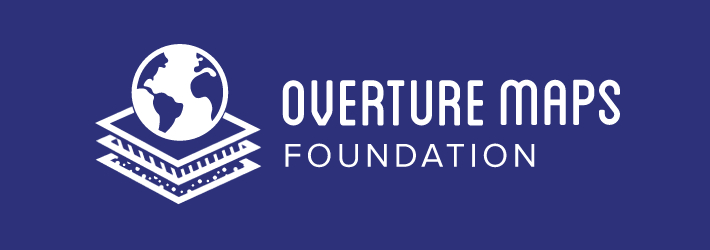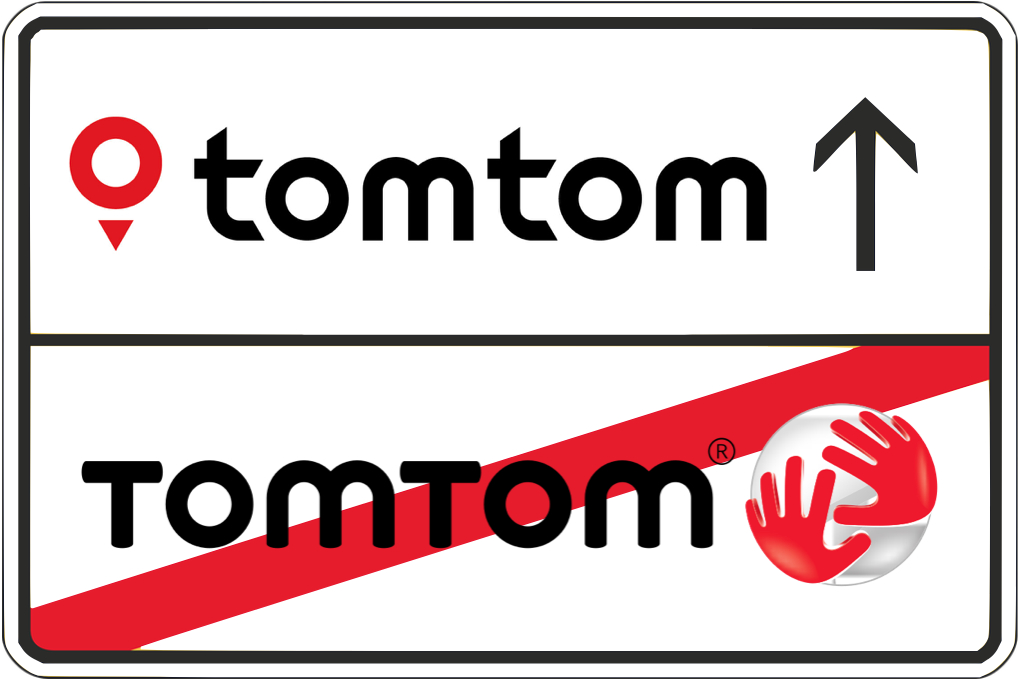To Build the Smartest and the most Interoperable Map in/about the World
December 19th, 2022 | by Andreas Richter
(5 min read)
Recently two announcements caught our attention: TomTom wants to build the smartest map in the world and the Linux Foundation wants to build interoperable open map data. Let’s look behind the scenes.
To anticipate the key facts of both undertakings (which are connected to each other): GEONATIVES have proposed most of the core elements in previous publications and features such as the data assessing and processing, incorporation of different stakeholders as well as providing trusted map data on marketplaces. But let’s start with the approach of the Linux Foundation despite the fact that this announcement came second.
Overture Maps: Interoperable Open Map Data

The Linux Foundation announced the initiative Overture Maps founded by the cloud infrastructure provider Amazon Web Services and Microsoft, the global communication and advertising platform operator Meta as well as the mapmaker TomTom.
They want to build “reliable, easy-to-use, and interoperable open map data” that will be “open to all communities with a common interest in building open map data”.
Overture Maps builds upon four pillars:
- Structured data schema: Build a common and easy-to-use data schema for storing all map data that will be contributed to Overture Maps.
- Import various data sources: Import data from various sources such as open or public data or data derived by machine learning approaches.
- Quality Assurance Process: Validate the contributed data to remove glitches and avoid “vandalism”.
- Entity Referencing System: Provide location referencing from Overture Maps to additional data sources.
The overall goal is to “build the best-in-class maps service”, to map physical environments completely, accurately and up-to-date. If a public authority or road operator decides to convert a road lane into a pop-up bike lane, like we have seen in the last pandemic years, this change shall be incorporated on short notice. TomTom as mapmaker will provide their road network and building footprint data but the most important data source will be OpenStreetMap. The difference between the undertaking Overture Maps and OpenStreetMap is that Overture Maps will be data centric and focus on data schema and data technology such as storage and interfacing, whereas OpenStreetMap is community centric to build a map of the world for visualizing and routing purpose. One huge drawback of OpenStreetMap data is that you can model it without many boundaries – which is great for easy contribution access but bad for systematic (which means automated) data usage: The only goal is that in the end the map looks great, independent how you have achieved to model it.
The Linux Foundation announcement is saying that they want to start in 2023 with providing data and (meta) information for routing applications on road networks as well as in buildings. The base map will be open source using Open Database License (ObdL) and the code will be made public using MIT license. Thus, free for everybody. Added-value services are foreseen subsequently.
Why are the four founding members doing that? Well, the cloud infrastructure providers want to support their geodata-dependent customers with tailored processing and storage functionality to move more customer applications into their cloud environments. Meta wants to use geodata for improving their advertising business model and TomTom wants to build their “smartest map on the planet”.
But are we missing some of the future megatrends such as automated driving or integrated city planning? Well, let’s see if we find the answers in TomTom’s undertaking because from a historical point of view TomTom is not only taking care of navigation data but also deals with high-definition maps for automated driving.
TomTom: Smartest map on the planet

Before the press release of the Linux foundation there was already the announcement of TomTom to create a new mapping platform and ecosystem. Because it is a breaking change in the business model of TomTom they have changed their logo from the hands to a pin to represent a new open and collaborative mapmaking approach – it seems to be no longer hands-on – but nailing it!
TomTom says that they want to build a “hyper-detailed map.” Why? They want to enable business such as delivery (routing), geo-tagging (private as well as public) and advanced driver-assistance system integration (human machine interaction). But they do not mention automated driving on road or rail (and rail in general), which both need at least lane or track level details. TomTom believes that the world lacks a truly open and collaborative mapping ecosystem that does not follow a “one size fits all” approach and where business can build upon. But OpenStreetMap is the most important data source for TomTom’s new map platform. They want to overcome the not-standardized way of modeling in OpenStreetMap and want to check changes against other data sources. Additionally, the mobile mapping with TomTom’s own vehicle fleet shall continue to contribute data to the database; in addition, sensor-derived observation data will play an important role. Both will later add lane-level information to the map. Current vehicles on the road are too old and, therefore, do not have onboard the sensors and communication infrastructure necessary for information in lane level detail. Therefore, only GPS-traces will be used to update the road network in a more general way.
If you look at Mobileye’s Road Experience Management approach you will see that this is only half the truth: Hundreds of thousands of passenger cars are already equipped with Mobileye’s cameras and provide process data including road marking and road signage information. They are processed in Mobileye’s cloud environment and fed back into the map data. Automated driving vehicles will add even more data about their environment due to their comprehensive sensor setup. We would like to see that TomTom integrates their more detailed road information into the “smartest map on the planet” as well. They already have high-definition map data that can be extended e.g., by localization information called RoadDNA, which both are helpful for automated driving use cases.
Back to TomTom’s business case: Converting OpenStreetMap data in a reliable and standardized data schema, adding additional data and providing it for free (in Open Database License – see above) seems to be a good idea but it may not be a future-proof business case. TomTom wants to focus on the mapmaking and wants to bring it to a new reliable and trustworthy level. Artificial intelligence shall take over the manual work of ensuring accuracy and correctness. The resulting map shall be ready-to-use for everybody without having the additional need on customer side to check and transform the data to their own implementation. TomTom will assimilate OpenStreetMap data and data from “leading technology industry” and sell it to OEMs as additional data layers based on the Overture Maps infrastructure approach (the mentioned added-value services).
These additional layers shall include information about road regulation and signage (which is already incorporated in OpenStreetMap) or road geometry such as curvature and road profiles. Where it differs from the already available data like the HERE lanes and OpenStreetMap attributes wasn’t mentioned. The only difference is that the already existing high-definition map of TomTom isn’t provided in their own proprietary format or the industry-common Navigation Data Standard format but provided in a publicly available new data format. Unfortunately, it looks like not the entire “hyper-detailed map” data will be contributed to the free-to-use database. TomTom will provide a first implementation mid of next year and then also unveil additional industry partners. Let’s see what 2023 will bring!
Conclusion
Reading our GEONATIVE posts makes sense! All of the core components of both undertakings have already been discussed as useful to tackle the current mega-trends such as change in mobility and logistics. Also, city planning and citizen participation are taken into account. But to continue without self-praising: It is good to see that more and more stakeholders realize that it does not make sense to map the only one world we have again and again and try to come up with their own best-in-the-world data format. It makes more sense to collaborate on pre-competitive basis in a standardized way to build interesting and value-adding applications on top. We only can support such kind of undertakings!
After the above mentioned announcements the next big map stakeholders had to offer something new:
HERE maps also started to create the best map in the world called “UniMap”.
https://www.here.com/about/press-releases/en/here-introduces-unimap-to-revolutionize-how-maps-are-created-updated-and
HERE’s advantage is that they are already partnering with various OEM to collect vehicle data for updating the map. HERE’s goal is to provide changes within minutes or even seconds and made available for customers within 24 hours. The changes in real world should be detected by AI algorithms based on vehicle and IoT sensor data. Also customers should be able to enrich the data by their own location data or crowd source data from 3rd party. Sounds familiar so far?
Also Google is now entering the “HD map” market.
https://www.theverge.com/2023/1/5/23540392/google-maps-hd-volvo-ex90-polestar-3-ces
It will offer HD maps with relevant features to their Android Auto customers. But Google didn’t mention any detail on this: neither which kind of map features, nor where they come from and even not how (often) they will be updated.
Let’s see what future will bring… and what other big stakeholders such as NavInfo or Mobileye will continue with their 3rd party independent map solutions.